How to Plant Garlic in the Fall
How to plant garlic in the fall for the most flavourful, large garlic ever. Get those cloves in the ground in the fall just before the soil freezes and snow flies.
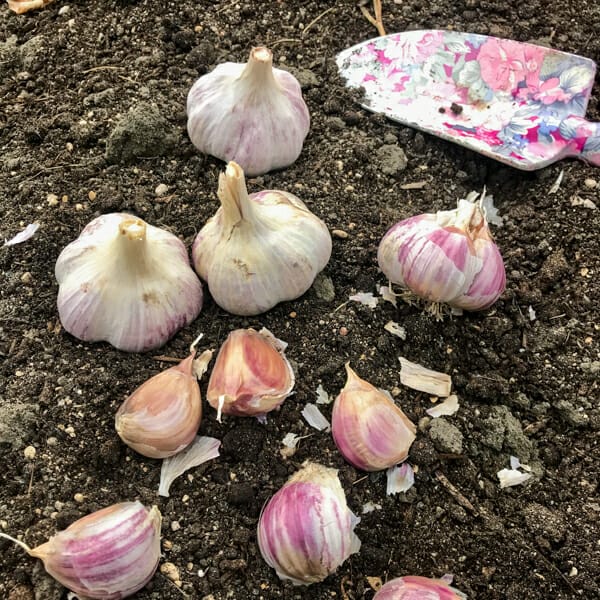
Fall is the optimum time to plant garlic. Specifically, in our Zone 2B-3 area, mid to late October is the best time to plant garlic. It sounds bizarre to be planting anything at this time of year, but it’s the best way to get fully developed garlic bulbs next summer. You want to give the roots a chance to develop, but you don’t want the greens to break through the surface and be killed by the cold. Ideally, you want to plant garlic about three weeks before the ground freezes solid – exactly when that happens is a bit of guess work.
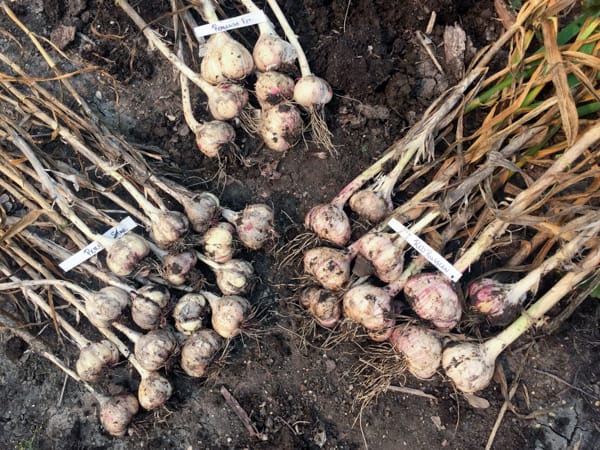
How to Plant Garlic
1. Get local garlic – don’t use the garlic from your fridge or some random garlic from some random big name store. You’ll get better results from locally sourced garlic. Next year, after your wildly successful garlic harvest you can plant some of your own garlic!
2. Separate the garlic heads into the individual cloves ( known as “cracking the bulb”). It’s not necessary to remove the papery layer, in fact, it’s better to keep it on and avoid damaging the cloves, especially the bottom or “basal plate” – the part where the roots will develop from. Do this step shortly before planting so the bottom does not dry out.
3. Plant only the nice, big, plump cloves. Basically, what you plant is what you’ll get. If you plant tiny cloves, you’ll get a tiny bulb of garlic at harvest time. If you plant two cloves stuck together, you’ll get two small, underdeveloped garlic bulbs stuck together. Choose only the biggest, best bulbs for planting and eat the small cloves for dinner tonight!
4. Plant in full sun about 3-4 inches deep and leave about 4-6 inches between each clove. This always looks very deep and very spaced apart for single cloves. But remember, garlic needs plenty of room to grow because it is a heavy feeder and does not like competing for water or nutrients with any other plants.
5. Ensure the pointy end is sticking up and the root end is firmly planted in the soil. Cover with soil.
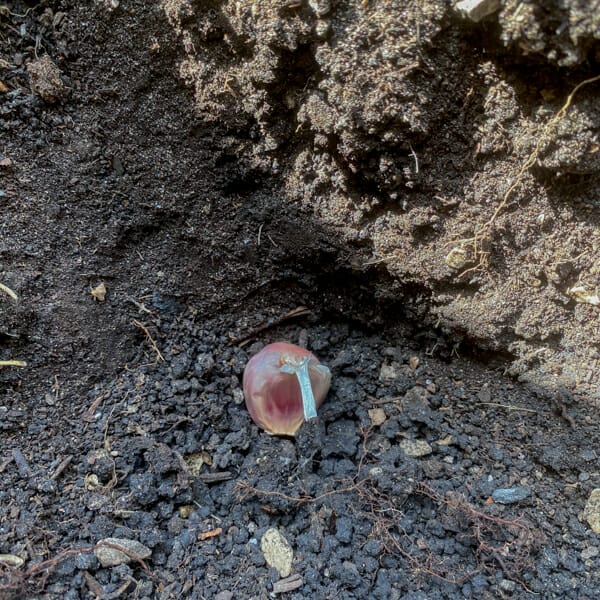
6. Cover garlic bed with 2-4 inches of mulch (leaves) to help protect the garlic from the freeze/thaw cycle. I have used leaves, grass clippings and straw as mulch. If you don’t have any mulch, use shredded paper or plant garlic one inch deeper.
7.Watch for garlic to sprout early in the spring. If you find cutworms in your garden, consider putting a collar (cardboard tissue roll) around each garlic clove to protect them from these hungry dudes who are eager to chomp anything green in early spring. Can you spot the cutworm in the first picture?

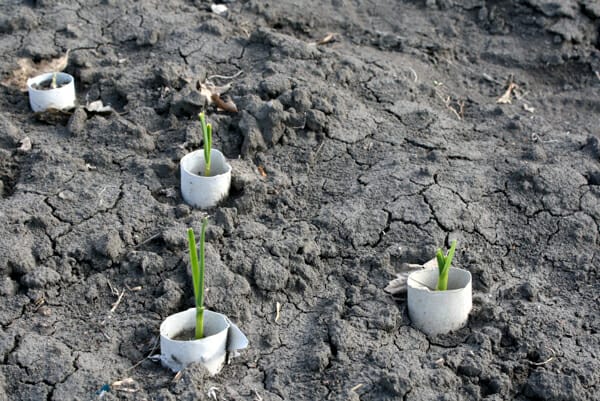
8. Weed well throughout the growing season, garlic doesn’t like competition from weeds.
9. Enjoy scapes in July. These curly garlic seed heads can be chopped and used like garlic in recipes. You could also make garlic scape pesto or fry garlic scapes as is. Getting scapes is one of the benefits of fall planting.
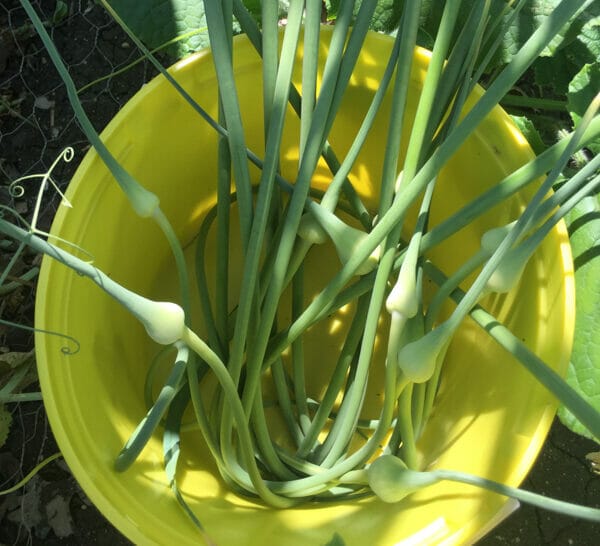
10. Harvest in late July or early August when the green tops dry out and fall over. That’ll be the cue to harvest the garlic and for us to talk about delicious oven roasted garlic.
What if It’s Spring Now?
Luckily, if need be, you can plant garlic in early spring as soon as the ground is workable. Depending on wetness, this may be late April or early May. I know this, because I’ve done it a couple of times when I’ve forgotten or neglected to plant garlic in the fall.
But there are consequences to planting in the spring – bulbs will not fully develop and you probably won’t get any scapes. You may end up harveting one clove or a tight, small bulb that has not fully split into separate cloves. You’ll still get some great flavour, but it won’t be the garlic of your dreams. Nonetheless, I say go for it. Small garlic is better than no garlic! Just plant it as early in the year as you possibly can even if there is still frost in the ground and days are still below freezing.
For more gardening How To’s, check out the following posts:
When to Plant Different Vegetables


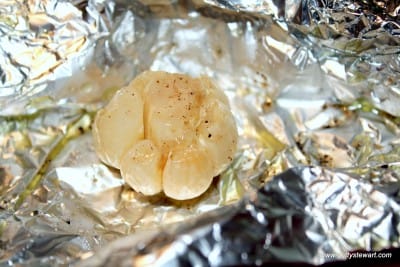
If you harvest your garlic around the August long weekend, the cloves will still be in a tight head, will dry and keep well. If you wait longer, the cloves will start to open up and don’t keep well.
You’re absolutely right, Dodie. Harvest when the leaves have dried and flopped over, don’t wait til fall. The garlic cloves will become much loser and open up and will not store well over winter if left too long.